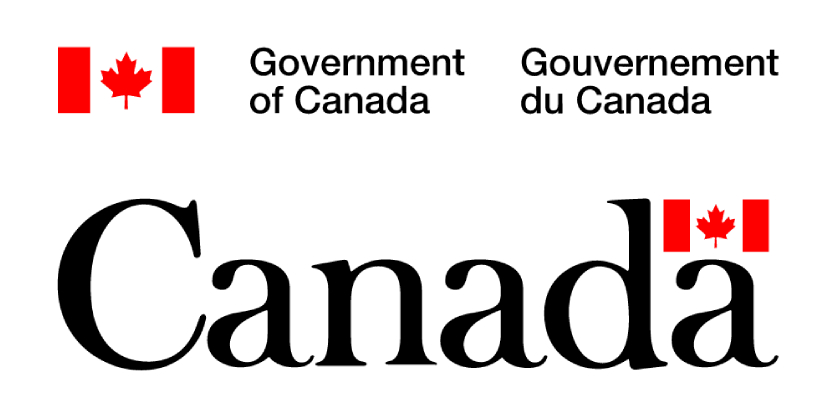Government of Canada Announces $50 Million for Ontario’s Expansion of Clean, Reliable and Affordable Nuclear Energy
March 1, 2024

This investment comes as the Governments of Canada and Ontario are working together on the Canada-Ontario Regional Table collaboration framework
For decades, Canada and Ontario’s nuclear technology has been world-leading, providing safe, reliable, and affordable non-emitting energy, as well as good jobs for workers, with over 75,000 hard-working Canadians employed across the nuclear supply chain. Today, the governments of Canada and Ontario are working together to advance new nuclear power generation in Ontario to cement our globally recognized competitive advantage, meet growing demand for clean energy and create even more good-paying jobs for Canadians.
Recently, on the margins of the Canadian Nuclear Association conference, the Honourable Jonathan Wilkinson, Canada’s Minister of Energy and Natural Resources, announced an investment in Ontario’s expansion of nuclear energy with up to $50 million in federal funding for Bruce Power’s assessment of new generation opportunities at its site in Tiverton, Ontario. This funding, from the federal Electricity Predevelopment Program, enables the exploration of a project that could produce power for up to 4,800,000 homes and businesses in Ontario.
This work builds on the Honourable Todd Smith, Ontario’s Minister of Energy’s initial announcement in July 2023 and is an important step in building the first large-scale nuclear build in Canada in more than 30 years. This project is part of Powering Ontario’s Growth, the province’s plan to meet growing electricity demand and reduce emissions through Ontario’s clean electricity grid.
This project alone represents more than 25 percent of the new nuclear capacity required for Ontario to meet its clean electricity needs in 2050, as recommended by Ontario’s Independent Electricity System Operator’s Pathways to Decarbonization Report, and it will help Canada with its ongoing efforts to achieve a clean, reliable and affordable electricity grid.
This project also represents a significant domestic economic opportunity, further establishing Canada and Ontario as international leaders on nuclear energy by building on our legacy of developing and deploying safe and reliable nuclear technology in Canada and around the world.
Bruce Power will use the federal funding to support important project pre-development work, including the completion of an Impact Assessment and Licence to Prepare Site application; early engagement activities with local municipalities and Indigenous communities; and technical, environmental and engineering studies and evaluations. This information is crucial for decision-making on a project that has the potential to create and sustain many high-quality jobs in Bruce, Grey and Huron counties, as well as across the Canadian nuclear supply chain.
This investment comes as the Governments of Canada and Ontario are working together on the Canada-Ontario Regional Table collaboration framework, with priorities that include advancing the nuclear industry in Ontario, along with joint actions on electrification, critical minerals, hydrogen, and the forest sector, as well an improved permitting process and increased regulatory effectiveness and efficiency to get clean energy projects online in time to meet rising demand.
Canada and Ontario are also continuing to work collaboratively on the draft Clean Electricity Regulations, as they have since the first draft was released, to address the concerns raised by Ontario’s expert system planners with the goal of ensuring the final regulation will maintain Ontarians’ access to a reliable, affordable and clean electricity system.
These actions build on steps already taken by both governments to meet emerging energy needs and ensure a reliable, affordable and clean electricity supply, including the following initiatives from the Government of Canada:
- A $970-million investment from the Canada Infrastructure Bank to advance Canada’s first grid-scale small modular reactor (SMR) at Ontario Power Generation’s (OPG) Darlington site;
- ·NRCan’s Electricity Predevelopment Program — which is a $250-million program to support pre-development activities of clean electricity projects like the one announced today;
- $4.5-billion worth of investments under the Smart Renewables and Electrification Pathways Program (SREPs), including previously announced support for five other clean energy projects in Ontario that will support Ontario’s grid;
- Regulatory tools like the Clean Electricity Regulations, on which the Government of Canada and Ontario continue to collaborate to support the development of a clean, reliable and affordable grid;
- A 15-percent refundable Investment Tax Credit for Clean Electricity for eligible investments in nuclear generation for new builds and refurbishment
- This also includes the following initiatives from the Government of Ontario:
- Procuring 4,000 MW of new electricity generation and storage resources, which includes the largest planned procurement of clean energy storage in Canada’s history.
- Rolling out $342 million in new and enhanced energy efficiency programs while helping families and businesses reduce their electricity use so they can save money on their energy bills.
- Supporting Ontario Power Generation’s (OPG) refurbishment of the Pickering Nuclear Generating Station.
- Building four grid-scale small modular reactors (SMR), including the first in the G7, at OPG’s Darlington site.
- Establishing an Electrification and Energy Transition Panel to advise the government on how it can continue to leverage Ontario’s clean grid and innovative energy sector to power Ontario’s growing economy and population.
As Canada and Ontario work together to compete for historic investments, we need to be future-forward in order to seize the economic opportunities afforded by the transition to a clean energy economy. Through their strategic investments and initiatives, the Governments of Canada and Ontario will continue to work together to position Ontario and Canada as a global supplier of clean energy and new technologies, while creating new opportunities, good jobs and a clean, reliable, and affordable electrical grid for all.
Quotes
“The federal government is acting on our commitment to build a net-zero economy that provides clean electricity, economic growth, and good jobs for all Canadians. To help us get there, we are working with the Government of Ontario to ensure Ontario is positioned to achieve a clean, reliable and affordable electricity grid with the expectation that it will comply with the forthcoming federal clean electricity regulations. Bruce Power has experienced years of success with nuclear energy in Ontario, and this announcement will enable that success to continue, and grow, in the future. This means more reliable and affordable electricity for Canadians and good jobs and economic opportunities for communities across Ontario.”
The Honourable Jonathan Wilkinson
Minister of Energy and Natural Resources
“With global business looking to expand in jurisdictions with reliable, affordable and clean electricity Ontario’s world-class clean electricity grid is helping us land historic investments. New nuclear generation, like the first large-scale nuclear build in a generation at Bruce Power, will ensure we have the reliable, affordable and clean electricity we need to support the next major international investment, the new homes we are building, and industries — like our steel producers — as they grow and electrify. We will also continue to work collaboratively with the Government of Canada as we continue to build more clean energy projects by working toward an improved permitting process and increased regulatory effectiveness, as well as final Clean Electricity Regulations, with the expectation that they will support a reliable, affordable and clean electricity system in Ontario.”
The Honourable Todd Smith
Minister of Energy, Government of Ontario
“Ontario has one of the cleanest electricity grids in the world and the nuclear industry is leading the way. This pre-development funding for new nuclear at the Bruce site is a great example of how the federal and provincial governments are working together with the private sector supporting early Indigenous and community engagement, planning and support for pre-development activities for clean-energy projects that will allow us to meet climate goals that will benefit Ontario and all Canadians for the long term.”
Michael W. Rencheck
President and Chief Executive Officer of Bruce Power
Quick Facts
- Ontario’s Independent Electricity System Operator’s Pathways to Decarbonization Report indicates that as much as 17,800 MW of nuclear capacity could be required in Ontario to meet its clean electricity needs in 2050.
- Nuclear energy is an important part of Canada’s energy mix — currently providing 14 percent of our electricity nationally and over 50 percent in Ontario.
- The nuclear sector helps Canada avoid approximately 45 million metric tonnes of carbon dioxide emissions annually. As a country where 82 percent of our electricity comes from low- or non-emitting sources already, nuclear continues to be a complement to the strong renewables sector in continuous development.
- In September 2023, Minister Wilkinson announced $3 billion in export financing for Romania to build two new CANDU reactors, Cernavoda 3 and 4. This financing will give around 200 Canadian companies the opportunity to bid on up to $3 billion in work, create hundreds of Canadian jobs and help avoid 8 million tonnes of carbon emissions annually.
Related Story
Ontario Supporting Plan to Refurbish Pickering Nuclear Generating Station
The Ontario government is supporting Ontario Power Generation’s (OPG) plan to proceed with the next steps toward refurbishing Pickering Nuclear Generating Station’s “B” units (units 5-8). Once refurbished, Pickering would produce a total of 2,000 megawatts (MW) of electricity, equivalent to powering two million homes, helping to meet increasing demand from electrification and fuelling the province’s economic growth.





